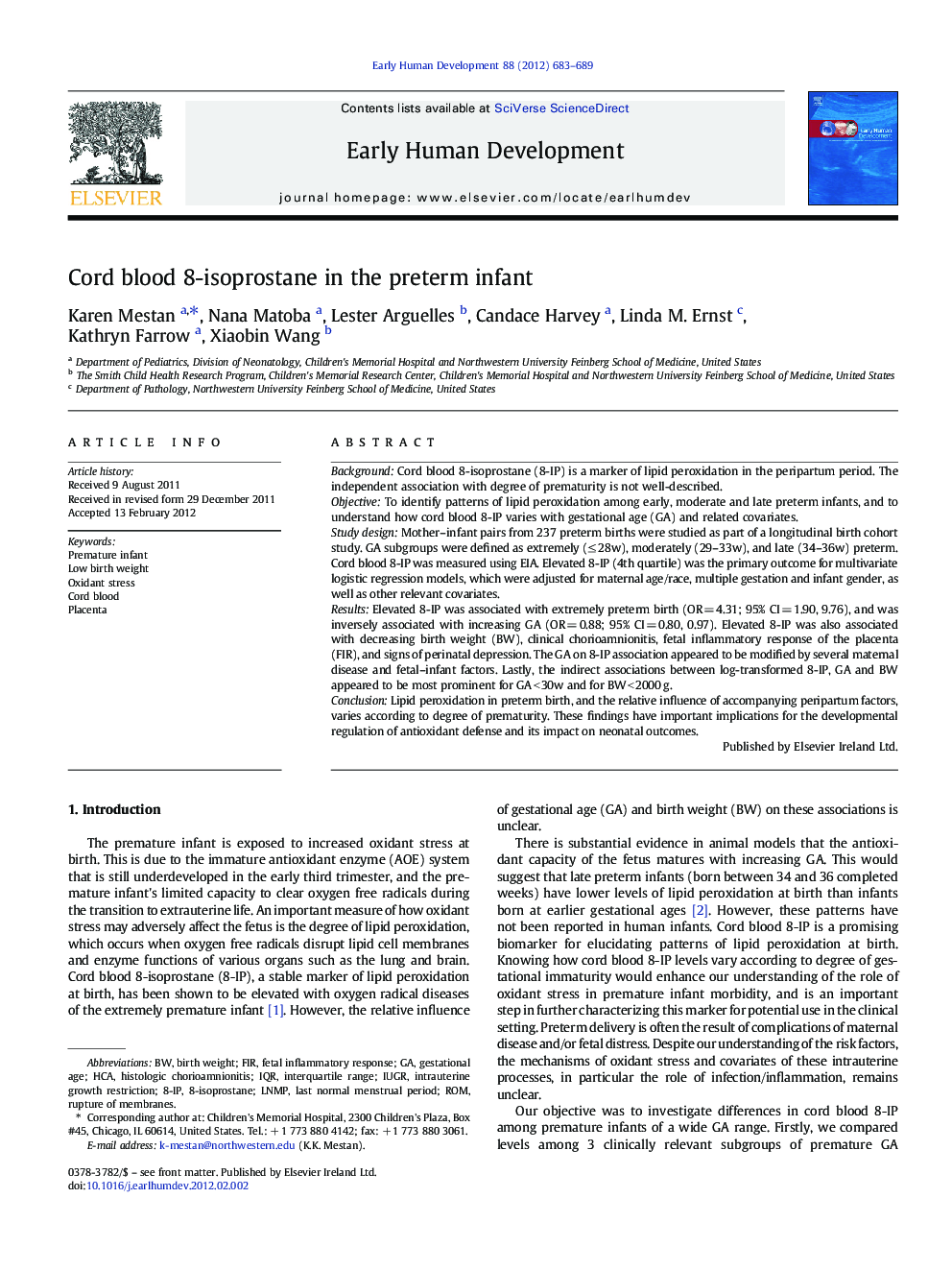| Article ID | Journal | Published Year | Pages | File Type |
|---|---|---|---|---|
| 3916858 | Early Human Development | 2012 | 7 Pages |
BackgroundCord blood 8-isoprostane (8-IP) is a marker of lipid peroxidation in the peripartum period. The independent association with degree of prematurity is not well-described.ObjectiveTo identify patterns of lipid peroxidation among early, moderate and late preterm infants, and to understand how cord blood 8-IP varies with gestational age (GA) and related covariates.Study designMother–infant pairs from 237 preterm births were studied as part of a longitudinal birth cohort study. GA subgroups were defined as extremely (≤ 28w), moderately (29–33w), and late (34–36w) preterm. Cord blood 8-IP was measured using EIA. Elevated 8-IP (4th quartile) was the primary outcome for multivariate logistic regression models, which were adjusted for maternal age/race, multiple gestation and infant gender, as well as other relevant covariates.ResultsElevated 8-IP was associated with extremely preterm birth (OR = 4.31; 95% CI = 1.90, 9.76), and was inversely associated with increasing GA (OR = 0.88; 95% CI = 0.80, 0.97). Elevated 8-IP was also associated with decreasing birth weight (BW), clinical chorioamnionitis, fetal inflammatory response of the placenta (FIR), and signs of perinatal depression. The GA on 8-IP association appeared to be modified by several maternal disease and fetal–infant factors. Lastly, the indirect associations between log-transformed 8-IP, GA and BW appeared to be most prominent for GA < 30w and for BW < 2000 g.ConclusionLipid peroxidation in preterm birth, and the relative influence of accompanying peripartum factors, varies according to degree of prematurity. These findings have important implications for the developmental regulation of antioxidant defense and its impact on neonatal outcomes.
